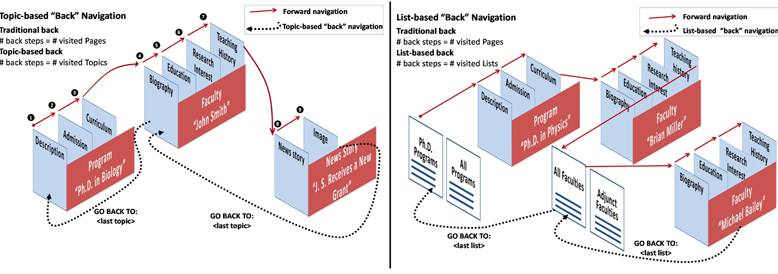Webtime

Methodology
- Controlled evaluation study with 10 visually-impaired participants
- Quantitiative analysis
Problem Space
When screen reader users need to backtrack pages to find previously visited content, they are forced to listen to parts of each unwanted page to recognize it. This makes aural back navigation slow and inefficient, especially on large websites.
To address this, we introduced two navigation strategies—topic-based back and list-based back—that provide shortcuts by using the conceptual structure of content-rich websites. Both were tested in Webtime, an accessible website on the history of the Web.
Research Question
What are the effects of topic- and list-based back, compared to traditional back, on navigation efficiency, navigation experience, and perceived cognitive effort for screen reader users?
Approach
We conducted a controlled study with 10 visually impaired participants at the Indiana School for the Blind and Visually Impaired. Each participant completed fact-finding tasks using traditional back, topic-based back, and list-based back. This allowed us to directly compare both new strategies against traditional back.
Impact
- Increased navigation efficiency by reducing time-on-task and the number of backtracked pages
- Improved perceived cognitive effort and navigation experience for participants
- Demonstrated that topic- and list-based back can supplement traditional back mechanisms on information-rich websites
My Responsibilities
- Led the controlled evaluation study in collaboration with two other UX researchers
- Analyzed study data and synthesized findings into actionable insights
Funding
NSF-funded research project “Navigating the Aural Web”, PI: Dr. Davide Bolchini
Publications
Rohani Ghahari, R., Ferati, M., Yang, T., & Bolchini, D. (2012, October). Back navigation shortcuts for screen reader users. In Proceedings of the 14th international ACM SIGACCESS conference on Computers and accessibility (pp. 1-8). ACM. ![]()